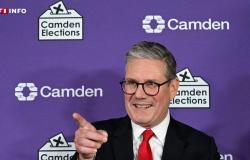The idea of associating a French state enterprise with a private American engine manufacturer to conquer the medium-haul aircraft market might seem crazy. However, it germinated in the head of René Ravaud, CEO of the National Society for the Study and Construction of Aviation Engines, or Snecma, at the beginning of the 1970s. Fifty years later and with more than 45,000 CFM56 and Leap sold, the idea turned into success story under the name CFM International. A saga that Safran (which succeeded Snecma) and its American partner General Electric (GE) will celebrate on June 5.
Reindustrialization in Île-de-France: local elected officials dream of welcoming the aeronautics industry
“It’s important to look at what has happened over these fifty years, it’s a beautiful story,” underlines Olivier Andriès, general director of the Safran group. He explains that Snecma was then focused on military engines, but that “René Ravaud had a bright idea; he said to himself that there was a place to be taken in the civil sector with an engine providing a fuel consumption gain of more than 20% compared to the reference American engine.” A vision carried out with the support of President Georges Pompidou, convinced that France had to be present in the field of engines to establish itself as a major aeronautical nation.
75% of the global market
Unable to rely on the British engine manufacturer Rolls-Royce, in bankruptcy, or on the American giant Pratt & Whitney – reluctant to see its dominant position called into question – Snecma turned to GE. “René Ravaud met his counterpart Gerhard Neumann and, as always in these partnership stories, it’s chemistry between men,” continues Olivier Andriès, who nevertheless explains that the launch in 1974 of the CFM joint venture required an agreement between Georges Pompidou and American President Richard Nixon, due to the use of technologies from the military world.
The story wasn’t good right away, with GE even on the verge of throwing in the towel. “We had to wait seven or eight years before having a first client,” admits Olivier Andriès. Contracts quickly followed, with the American army then Boeing for the first re-engine of the 737 and, later, Airbus with the A320. Upon arrival, CFM captured 75% of the world market with its CFM56.
” The story repeats itself “
A performance reiterated with the launch of a new generation engine in 2008, the Leap, offering a reduction in consumption (and therefore CO2 emissions) of an additional 15%. New chain reaction: the engine is chosen by the Chinese manufacturer Comac for its C919, then by Airbus for the re-engine of the A320, and Boeing, forced to react with its 737 MAX. “Here again, we took 75% of the market share. The story repeats itself “, welcomes Olivier Andriès.
And he hopes it will repeat itself again with the Rise. This demonstration program relies on a fan (propeller at the front of the engine that propels air backwards, which provides most of the thrust) in open air. A technological breakthrough which should give rise to an engine that is 20% more efficient – but which complicates noise reduction. To achieve this, CFM must still convince Airbus and Boeing, or even Comac, to take the risk of adopting it for their future planes by 2035.
Beyond these successes, Olivier Andriès insists on the sustainability of this transatlantic partnership: “Usually 50-50 joint ventures don’t last. Obviously, it’s easier when you’re on a path to success. But this is also due to an ultra-simple mode of operation. » After a negotiation at the start of the program to fairly distribute the workload based on estimated costs, these are never mentioned again, and income is shared with strict equality. “It’s ultimately very demanding, because everyone has to be up to the task,” concludes the Safran boss.






